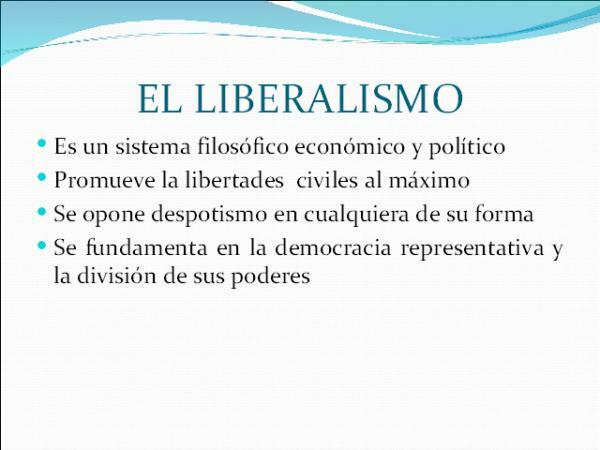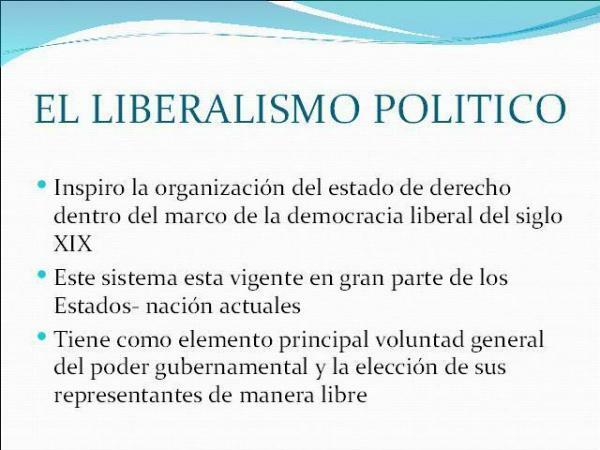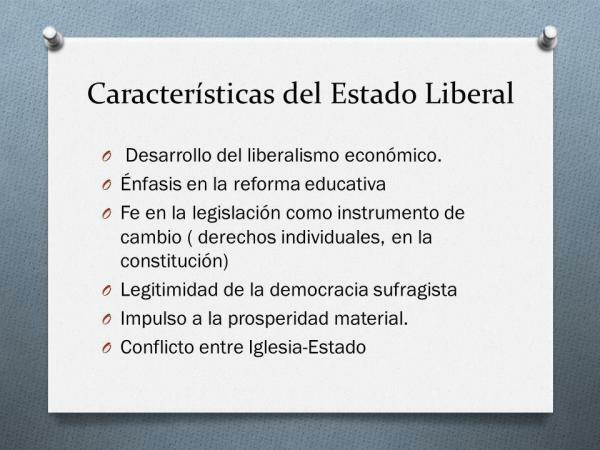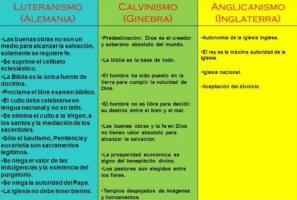Liberal system: definition and characteristics

Image: Monografias.com
The beginning of the Contemporary Age it was marked by the end of the absolute monarchy and the emergence of the liberal state. A political system that we could say that continues to this day, having its origin in the different liberal revolutions. Due to the importance it has for our current society, today in this lesson from a PROFESSOR we are going to discover definition and characteristics of the liberal system.
Index
- Definition of liberal system
- The most outstanding characteristics of the liberal system
- Liberal system in Spain
Definition of liberal system.
The liberal system is a political system characteristic of the beginning of the Contemporary Age and lasts until our times, although with certain modifications arising from the various problems it has had during the centuries after its creation.
The liberal system is one that has a certain configuration of the legal-political order of a State, characterized by the
separation of public powers, democracy, the free market and individual freedoms of the citizen.The liberal system arises as a consequence of the crisis of the absolutist modelpredominant throughout the Modern Age. This crisis is the one that originated the liberal revolutions, which brought the replacement of the monarchical model or old regime by a new regime of a liberal nature.

Image: Monografias.com
The most outstanding characteristics of the liberal system.
To continue with this lesson on the definition and characteristics of the liberal system, we are going to discover the most significant features of this political model. The liberal system brought with it a change in all spheres, both political, economic, and social. The characteristics that define the liberal system are the following:
- The form of government may vary, It can be a constitutional monarchy, a parliamentary monarchy or a Republic, among many others.
- Politically it is characterized by the separation of powers and a political system made up of several parties, which are elected by the people, to guarantee an alternation in power. Through this method of suffrage, the administrators of the executive and legislative branches are elected.
- Legally, the liberal state is characterized by the principle of legality. The citizen is offered a state of law, guaranteeing his individual rights, the exercise of his freedom, the equality of all before the law, freedom of expression, among many other things. We already discussed some of these characteristics in the lesson on the judiciary.
- In the social sphere, the State must offer a equal opportunities so that all citizens can occupy a place in society through their merits, breaking the lineage privileges characteristic of the Old Regime.
- Economically, it is characterized by respect for private property, the free market, and limited state intervention. In theory, the State should intervene as little as possible in the country's economy, intervening only in mediating certain economic conflicts between individuals.
- Another feature is the separation between the State and the Church, being able to be total as in France, or intermediate models like that of Spain with the Catholic Church.

Image: Slideplayer
Liberal system in Spain.
To continue with this lesson on we must talk about the emergence of the liberal system in Spain, its origin and the consequences it had for the society of the time.
The liberal revolution in Spain started late and in a slow and discontinuous way, mainly due to the weakness of the Hispanic bourgeoisie and a nobility and clergy with much more power than in other countries in Europe, where liberal revolutions had started much earlier than in Spain.
They can be pointed out three stages of liberalism in Spain.
- The first is the one that goes from 1808 to 1833, understanding the War of Independence, the Cortes of Cádiz and the reign of Fernando VII. During the War of Independence there was a power vacuum, the Spanish assumed sovereignty national, convening a Cortes where the representatives of the nation made decisions about the future from the country. In these Cortes a Constitution was created, with great liberal ideas, but the return of Fernando VII brought with it the end of the national sovereignty born during the war.
- The second stage is between 1833 and 1868, period in which the liberal revolution definitely triumphs. A conservative liberalism emerges, overthrowing the Old Regime and creating a new Constitution.
- The third stage is that of the Democratic Sexenio, between 1868 and 1874. At this time is when the more radical Spanish liberalism, breaking with the conservative characteristic of previous years. We can say that in these years a liberalism similar to that of Europe has been achieved for the first time.
If you want to read more articles similar to Liberal system: definition and characteristics, we recommend that you enter our category of Story.


